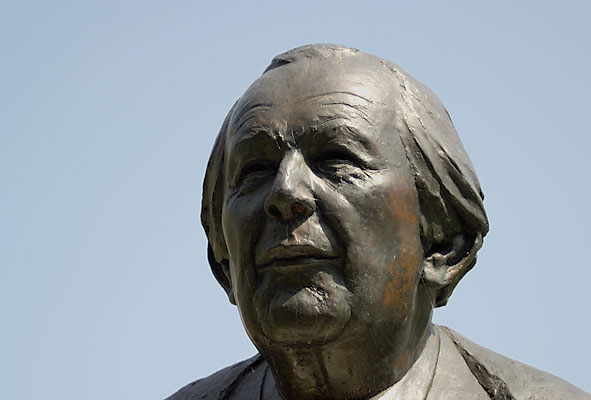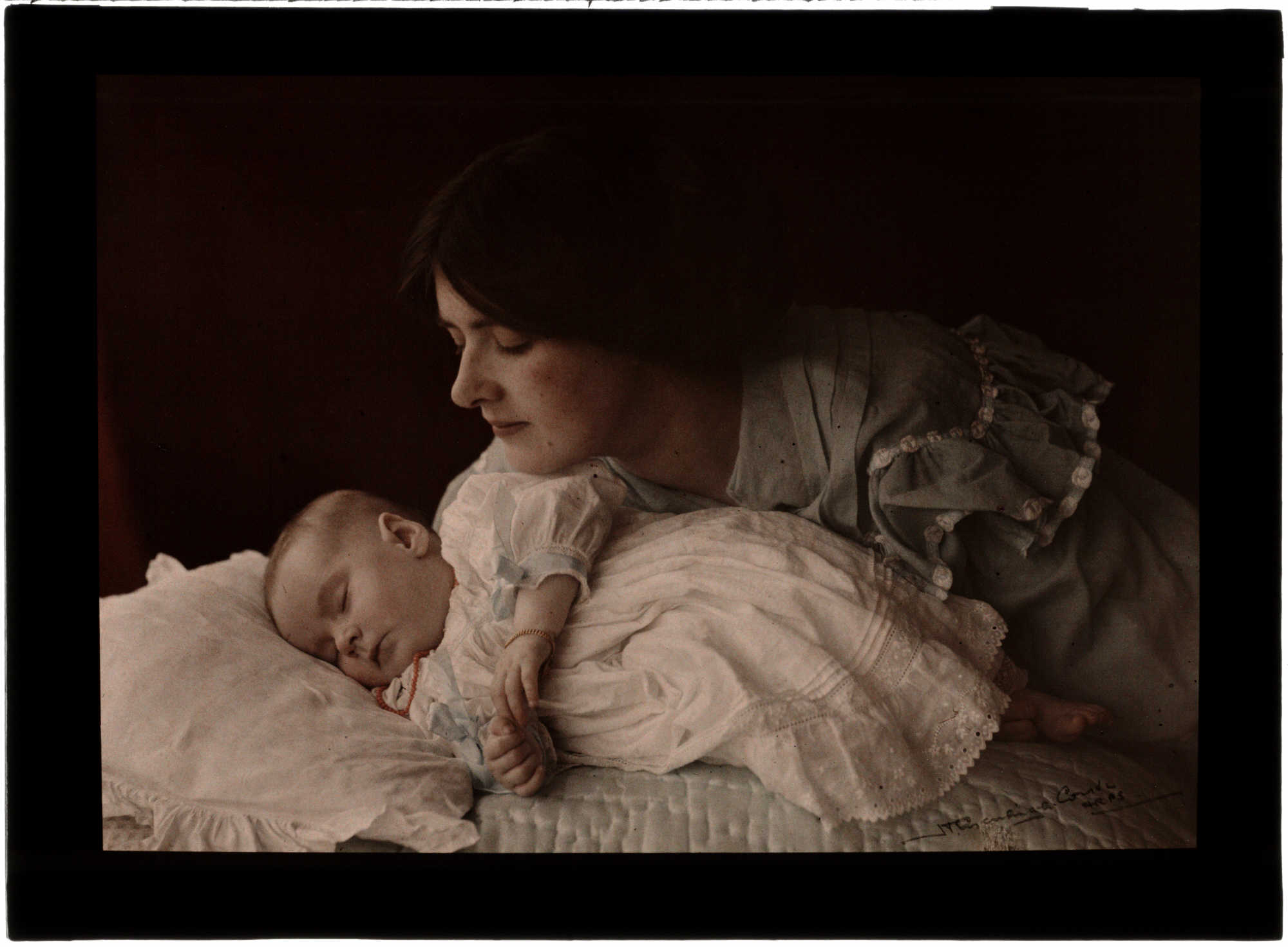|
Internal Working Model Of Attachment
Internal working model of attachment is a psychological approach that attempts to describe the development of mental representations, specifically the worthiness of the self and expectations of others' reactions to the self. This model is a result of interactions with primary caregivers which become internalized, and is therefore an automatic process. John Bowlby implemented this model in his attachment theory in order to explain how infants act in accordance with these mental representations. It is an important aspect of general attachment theory. Such internal working models guide future behavior as they generate expectations of how attachment figures will respond to one's behavior. For example, a parent rejecting the child's need for care conveys that close relationships should be avoided in general, resulting in maladaptive attachment styles. Influences The most influential figure for the idea of the internal working model of attachment is Bowlby, who laid the groundwork for ... [...More Info...] [...Related Items...] OR: [Wikipedia] [Google] [Baidu] |
John Bowlby
Edward John Mostyn Bowlby, CBE, FBA, FRCP, FRCPsych (; 26 February 1907 – 2 September 1990) was a British psychologist, psychiatrist, and psychoanalyst, notable for his interest in child development and for his pioneering work in attachment theory. A ''Review of General Psychology'' survey, published in 2002, ranked Bowlby as the 49th most cited psychologist of the 20th century. Family background Bowlby was born in London to an upper-middle-income family. He was the fourth of six children and was brought up by a nanny in the British fashion of his class at that time: the family hired a nanny who was in charge of raising the children, in a separate nursery in the house.Van Dijken, S. (1998). John Bowlby: His Early Life: A Biographical Journey into the Roots of Attachment Theory. London: Free Association Books Nanny Friend took care of the infants and generally had two other nursemaids to help her. Bowlby was raised primarily by nursemaid Minnie who acted as a mother figur ... [...More Info...] [...Related Items...] OR: [Wikipedia] [Google] [Baidu] |
Jean Piaget
Jean William Fritz Piaget (, , ; 9 August 1896 – 16 September 1980) was a Swiss psychologist known for his work on child development. Piaget's theory of cognitive development and epistemological view are together called " genetic epistemology". Piaget placed great importance on the education of children. As the Director of the International Bureau of Education, he declared in 1934 that "only education is capable of saving our societies from possible collapse, whether violent, or gradual". His theory of child development is studied in pre-service education programs. Educators continue to incorporate constructivist-based strategies. Piaget created the International Center for Genetic Epistemology in Geneva in 1955 while on the faculty of the University of Geneva, and directed the center until his death in 1980. The number of collaborations that its founding made possible, and their impact, ultimately led to the Center being referred to in the scholarly literature as "Piaget's ... [...More Info...] [...Related Items...] OR: [Wikipedia] [Google] [Baidu] |
Interpersonal Relationships
The concept of interpersonal relationship involves social associations, connections, or affiliations between two or more people. Interpersonal relationships vary in their degree of intimacy or self-disclosure, but also in their duration, in their reciprocity and in their power distribution, to name only a few dimensions. The context can vary from family or kinship relations, friendship, marriage, relations with associates, work, clubs, neighborhoods, and places of worship. Relationships may be regulated by law, custom, or mutual agreement, and form the basis of social groups and of society as a whole. Interpersonal relationships are created by people's interactions with one another in social situations. This association of interpersonal relations being based on social situation has inference since in some degree love, solidarity, support, regular business interactions, or some other type of social connection or commitment. Interpersonal relationships thrive through equitable ... [...More Info...] [...Related Items...] OR: [Wikipedia] [Google] [Baidu] |
Human Development
{{disambiguation ...
Human development may refer to: * Development of the human body * Developmental psychology * Human development (economics) * Human Development Index, an index used to rank countries by level of human development * Human evolution, the prehistoric process leading to the modern human species * ''Human Development'' (journal), a journal published by Karger See also * Human population growth Population growth is the increase in the number of people in a population or dispersed group. Actual global human population growth amounts to around 83 million annually, or 1.1% per year. The global population has grown from 1 billion in 1800 to ... [...More Info...] [...Related Items...] OR: [Wikipedia] [Google] [Baidu] |
Evolutionary Biology
Evolutionary biology is the subfield of biology that studies the evolutionary processes (natural selection, common descent, speciation) that produced the diversity of life on Earth. It is also defined as the study of the history of life forms on Earth. Evolution is based on the theory that all species are related and they gradually change over time. In a population, the genetic variations affect the physical characteristics i.e. phenotypes of an organism. These changes in the phenotypes will be an advantage to some organisms, which will then be passed onto their offspring. Some examples of evolution in species over many generations are the Peppered Moth and Flightless birds. In the 1930s, the discipline of evolutionary biology emerged through what Julian Huxley called the modern synthesis of understanding, from previously unrelated fields of biological research, such as genetics and ecology, systematics, and paleontology. The importance of studying Evolutionary biology is ... [...More Info...] [...Related Items...] OR: [Wikipedia] [Google] [Baidu] |
Ethology
Ethology is the scientific study of animal behaviour, usually with a focus on behaviour under natural conditions, and viewing behaviour as an evolutionarily adaptive trait. Behaviourism as a term also describes the scientific and objective study of animal behaviour, usually referring to measured responses to stimuli or to trained behavioural responses in a laboratory context, without a particular emphasis on evolutionary adaptivity. Throughout history, different naturalists have studied aspects of animal behaviour. Ethology has its scientific roots in the work of Charles Darwin and of American and German ornithologists of the late 19th and early 20th century, including Charles O. Whitman, Oskar Heinroth, and Wallace Craig. The modern discipline of ethology is generally considered to have begun during the 1930s with the work of Dutch biologist Nikolaas Tinbergen and Austrian biologists Konrad Lorenz and Karl von Frisch, the three recipients of the 1973 Nobel Prize in Phys ... [...More Info...] [...Related Items...] OR: [Wikipedia] [Google] [Baidu] |
Attachment Theory
Attachment theory is a psychological, evolutionary and ethological theory concerning relationships between humans. The most important tenet is that young children need to develop a relationship with at least one primary caregiver for normal social and emotional development. The theory was formulated by psychiatrist and psychoanalyst John Bowlby. Within attachment theory, infant behaviour associated with attachment is primarily the seeking of proximity to an attachment figure in stressful situations. Infants become attached to adults who are sensitive and responsive in social interactions with them, and who remain as consistent caregivers for some months during the period from about six months to two years of age. During the latter part of this period, children begin to use attachment figures (familiar people) as a secure base to explore from and return to. Parental responses lead to the development of patterns of attachment; these, in turn, lead to internal working models ... [...More Info...] [...Related Items...] OR: [Wikipedia] [Google] [Baidu] |
Maternal Sensitivity
Maternal sensitivity is a mother's ability to perceive and infer the meaning behind her infant's behavioural signals, and to respond to them promptly and appropriately. Maternal sensitivity affects child development at all stages through life, from infancy, all the way to adulthood. In general, more sensitive mothers have healthier, more socially and cognitively developed children than those who are not as sensitive. Also, maternal sensitivity has been found to affect the person psychologically even as an adult. Adults who experienced high maternal sensitivity during their childhood were found to be more secure than those who experienced less sensitive mothers. Once the adult becomes a parent themselves, their own understanding of maternal sensitivity will affect their own children's development. Some research suggests that adult mothers display more maternal sensitivity than adolescent mothers who may in turn have children with a lower IQ and reading level than children of adult ... [...More Info...] [...Related Items...] OR: [Wikipedia] [Google] [Baidu] |
Kenneth Craik
Kenneth James William Craik (; 1914 – 1945) was a Scottish philosopher and psychologist. Life He was born in Edinburgh on 29 March 1914, the son of James Craik, a solicitor. The family lived at 13 Abercromby Place in Edinburgh's Second New Town (previously the home of William Trotter). He was educated at Edinburgh Academy then studied philosophy at the University of Edinburgh. He received his doctorate from Cambridge University in 1940. He then had a fellowship to St John's College, Cambridge in 1941, where he worked with Magdalen Dorothea Vernon and published papers with her about dark adaptation in 1941 and 1943. He was appointed to be the first director of the Medical Research Council's Cambridge-based Applied Psychology Unit in 1944. During the Second World War he served in the fire-fighting sections of the Civil Defence. Together with Gordon Butler Iles he made major advances on flight simulators for the RAF and did major studies on the effects of fatigue on pilots ... [...More Info...] [...Related Items...] OR: [Wikipedia] [Google] [Baidu] |
Attachment Theory
Attachment theory is a psychological, evolutionary and ethological theory concerning relationships between humans. The most important tenet is that young children need to develop a relationship with at least one primary caregiver for normal social and emotional development. The theory was formulated by psychiatrist and psychoanalyst John Bowlby. Within attachment theory, infant behaviour associated with attachment is primarily the seeking of proximity to an attachment figure in stressful situations. Infants become attached to adults who are sensitive and responsive in social interactions with them, and who remain as consistent caregivers for some months during the period from about six months to two years of age. During the latter part of this period, children begin to use attachment figures (familiar people) as a secure base to explore from and return to. Parental responses lead to the development of patterns of attachment; these, in turn, lead to internal working models ... [...More Info...] [...Related Items...] OR: [Wikipedia] [Google] [Baidu] |
Schema (psychology)
In psychology and cognitive science, a schema (plural ''schemata'' or ''schemas'') describes a pattern of thought or behavior that organizes categories of information and the relationships among them. It can also be described as a mental structure of preconceived ideas, a framework representing some aspect of the world, or a system of organizing and perceiving new information, such as a mental schema or conceptual model. Schemata influence attention and the absorption of new knowledge: people are more likely to notice things that fit into their schema, while re-interpreting contradictions to the schema as exceptions or distorting them to fit. Schemata have a tendency to remain unchanged, even in the face of contradictory information. Schemata can help in understanding the world and the rapidly changing environment. People can organize new perceptions into schemata quickly as most situations do not require complex thought when using schema, since automatic thought is all that is r ... [...More Info...] [...Related Items...] OR: [Wikipedia] [Google] [Baidu] |






